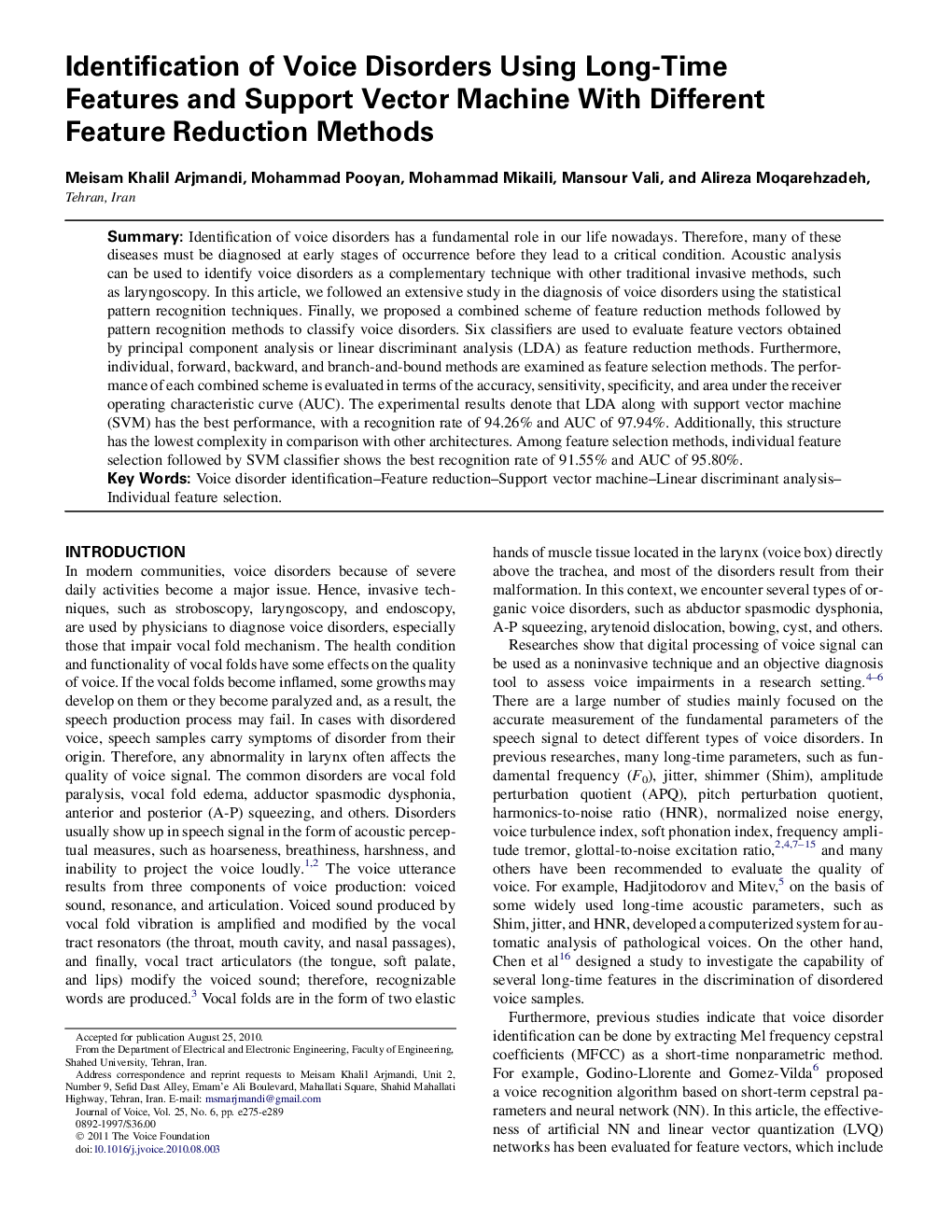| Article ID | Journal | Published Year | Pages | File Type |
|---|---|---|---|---|
| 1102034 | Journal of Voice | 2011 | 15 Pages |
SummaryIdentification of voice disorders has a fundamental role in our life nowadays. Therefore, many of these diseases must be diagnosed at early stages of occurrence before they lead to a critical condition. Acoustic analysis can be used to identify voice disorders as a complementary technique with other traditional invasive methods, such as laryngoscopy. In this article, we followed an extensive study in the diagnosis of voice disorders using the statistical pattern recognition techniques. Finally, we proposed a combined scheme of feature reduction methods followed by pattern recognition methods to classify voice disorders. Six classifiers are used to evaluate feature vectors obtained by principal component analysis or linear discriminant analysis (LDA) as feature reduction methods. Furthermore, individual, forward, backward, and branch-and-bound methods are examined as feature selection methods. The performance of each combined scheme is evaluated in terms of the accuracy, sensitivity, specificity, and area under the receiver operating characteristic curve (AUC). The experimental results denote that LDA along with support vector machine (SVM) has the best performance, with a recognition rate of 94.26% and AUC of 97.94%. Additionally, this structure has the lowest complexity in comparison with other architectures. Among feature selection methods, individual feature selection followed by SVM classifier shows the best recognition rate of 91.55% and AUC of 95.80%.
